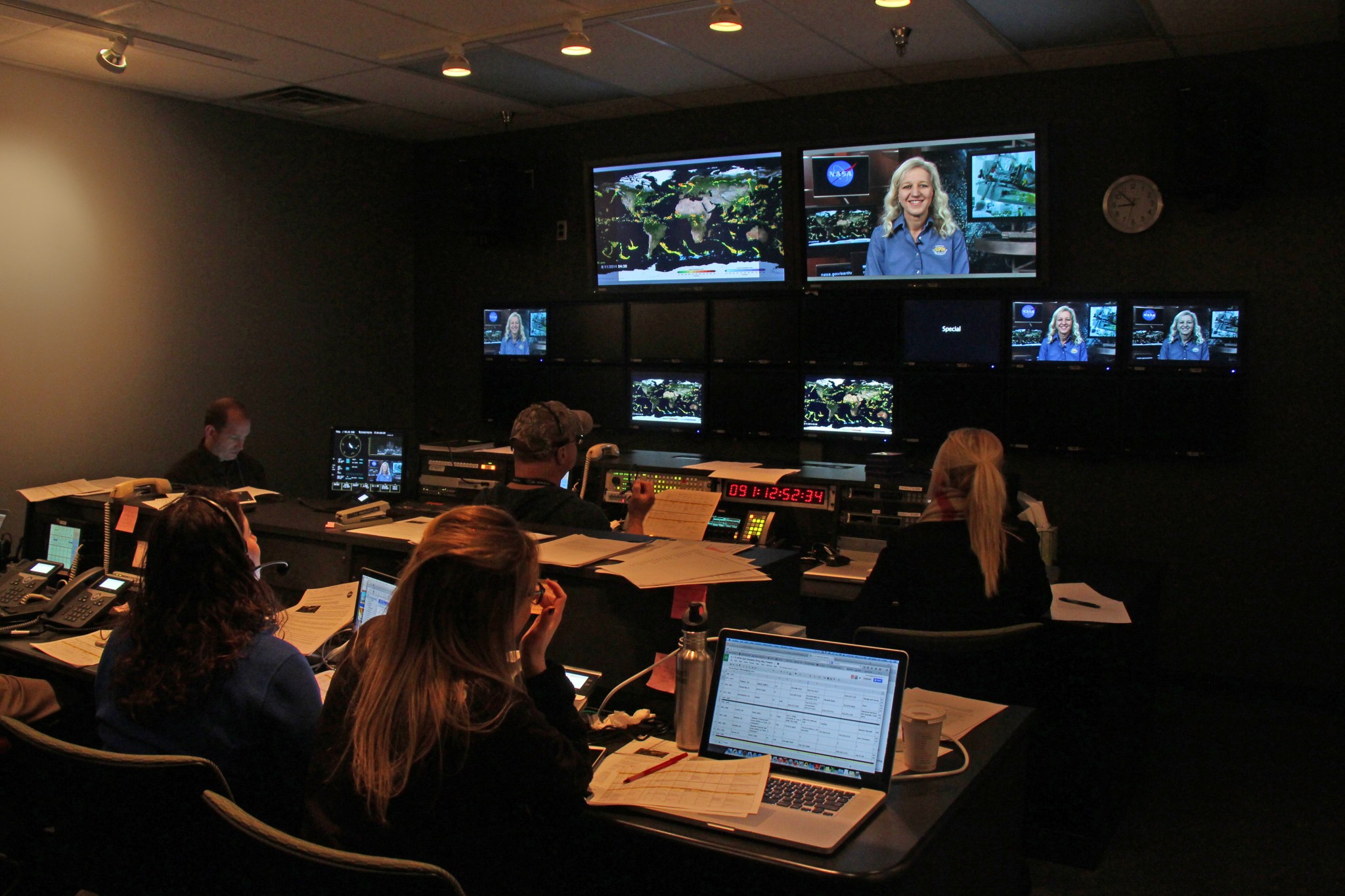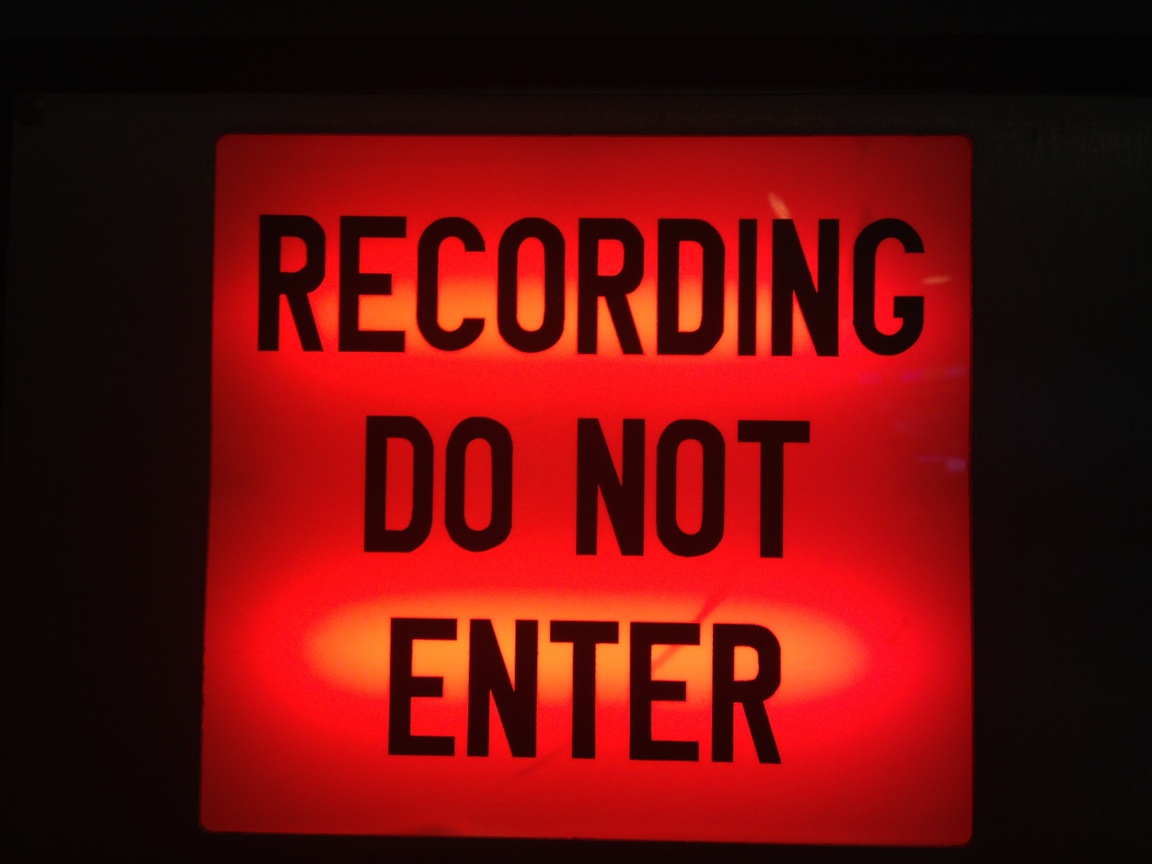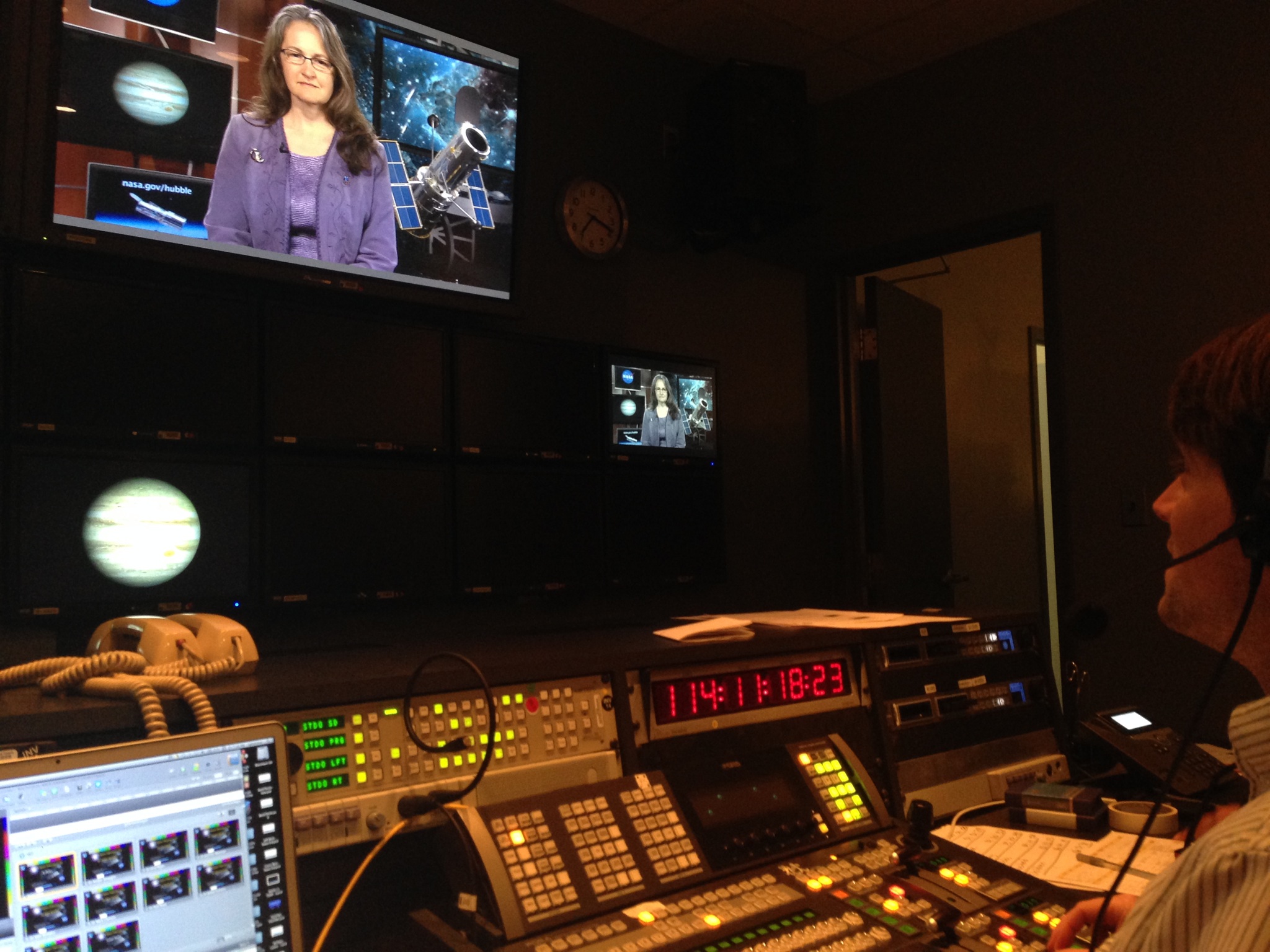“Three, two, one, go!” It sounds like a launch countdown in mission control, but that’s not the only kind of control room in NASA’s arsenal.
[FADE IN]
[Interior. Goddard TV Studio Control Room. Morning of Hubble Live Shots, April 24, 5:30 a.m. EDT.]
Dozens of monitors cover the wall of the TV studio control room at NASA’s Goddard Space Flight Center in Greenbelt, Maryland. The screens show animations, visualizations, various graphics and still images, all tied to the subject of the morning’s live shot campaign.
When the Goddard multimedia team knows a big story will be coming out of NASA, they put out a call to news stations and other media outlets across the country. The result: In four-minute blocks over the course of several hours, station reporters queue up to interview NASA scientists and engineers via satellite.
In March, live shots were for the launch of the SMAP mission. Earlier this month, it was global precipitation. Today, it’s the Hubble Space Telescope, marking its 25th anniversary.
One of the control room’s larger screens displays a live view of NASA scientist Dr. Padi Boyd, sitting on a stool in the adjacent TV studio while a staffer clips a microphone onto her lapel. Boyd is waiting for her next interview with a television station, minutes away. They are all ready to roll.
In front of this wall of screens are three rows of consoles, bedecked with hundreds of buttons, knobs and switches. John Caldwell sits at the video switcher, where he instantaneously selects which camera is live at any given moment. Audio engineer Mike Velle operates the audio mixer, ensuring good sound levels of the myriad feeds.
Director Pat Kennedy sits in the center row with producer Michelle Handleman and public affairs specialist Claire Saravia. Each stands by to troubleshoot technical glitches, field questions or cope with on-the-fly changes in stations’ schedules. A handful of other volunteers man the telephones that tie Goddard to the control centers of the participating media outlets. This morning, some three dozen are on the docket.
Nearby, out of sight in the TV studio, the camera crew takes direction from Kennedy on their headsets.
PAT
“Roll!”
[The scientist begins speaking. Seconds later, visualizations play on one of two large monitors as Dr. Boyd appears on the second.]
[Handleman smiles and leans forward, eyes bright.]
Kennedy is the maestro to Handleman’s first violinist. For several hours, the Goddard live-shot team jumps from one station to another. Flawless execution requires weeks of meticulous planning.
[CUE FLASHBACK SCENE]
Handleman first started planning the Hubble live shots about a month ago. One week out, Handleman, with Saravia’s assistance, circulated an advisory to stations with a description of the event, list of the talent (that is, the scientists available for interviews), sample questions and the satellite coordinates so the participating stations can tune in.
Leading up to the campaign, Handleman orchestrated a rehearsal with mock interviews, to give scientists and the production team a chance to prepare.
Handleman’s preparations for the on-camera talent included a primer on TV-friendly wardrobe: High-contrast and calming colors work best. The eye prefers cool blues, natural tones and pastels. Red jumps. Black bleeds. Bright pink, orange, white, yellow, purple and green are poor choices. Accessories are distracting, and the camera is unkind to stripes or intricate patterns.
She also advised them about body language. Don’t fidget. Look directly into the camera. Answer rather than nod. Punctuate responses with hand gestures.
[END FLASHBACK]
The morning of, the camera crew arrives around 4:30 a.m. They gauge the look and feel of the shot and set up the lighting. The talent arrives a bit later for makeup and microphone checks.
Once the interviews are underway, one member of the production team is always on the phone with whichever station is next in line, ensuring all the logistics are perfectly arranged. They remain on the phone with their news media counterparts until the interview is concluded.
[Exterior. Goddard TV Studio Control Room. Countdown to next live shot.]
[Talent appears on the large screen to the right. Cued-up video is to the left. Smaller screens display various TV station feeds.]
PAT
“We’re rolling in three. Two. One. And roll!”
[Video rolls on the control room monitors. The TV news anchor introduces Dr. Boyd. The interview begins.]
PAT
“And dissolve.”
Elizabeth M. Jarrell and Deanna L. Kekesi
NASA’s Goddard Space Flight Center, Greenbelt, Maryland



























